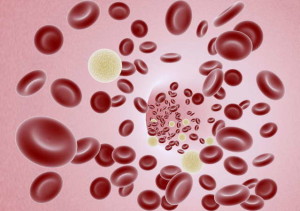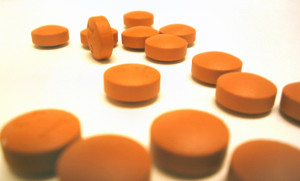Effect of Disodium EDTA Chelation Regimen on Cardiovascular Events in Patients With Previous Myocardial Infarction
 Gervasio A. Lamas, MD; Christine Goertz, DC, PhD; Robin Boineau, MD, MA; Daniel B. Mark, MD, MPH; Theodore Rozema, MD; Richard L. Nahin, PhD, MPH; Lauren Lindblad, MS; Eldrin F. Lewis, MD, MPH; Jeanne Drisko, MD; Kerry L. Lee, PhD ;
Gervasio A. Lamas, MD; Christine Goertz, DC, PhD; Robin Boineau, MD, MA; Daniel B. Mark, MD, MPH; Theodore Rozema, MD; Richard L. Nahin, PhD, MPH; Lauren Lindblad, MS; Eldrin F. Lewis, MD, MPH; Jeanne Drisko, MD; Kerry L. Lee, PhD ;
Importance Chelation therapy with disodium EDTA has been used for more than 50 years to treat atherosclerosis without proof of efficacy.
Objective To determine if an EDTA-based chelation regimen reduces cardiovascular events.
Design, Setting, and Participants Double-blind, placebo-controlled, 2 × 2 factorial randomized trial enrolling 1708 patients aged 50 years or older who had experienced a myocardial infarction (MI) at least 6 weeks prior and had serum creatinine levels of 2.0 mg/dL or less. Participants were recruited at 134 US and Canadian sites. Enrollment began in September 2003 and follow-up took place until October 2011 (median, 55 months). Two hundred eighty-nine patients (17% of total; n=115 in the EDTA group and n=174 in the placebo group) withdrew consent during the trial.
Interventions Patients were randomized to receive 40 infusions of a 500-mL chelation solution (3 g of disodium EDTA, 7 g of ascorbate, B vitamins, electrolytes, procaine, and heparin) (n=839) vs placebo (n=869) and an oral vitamin-mineral regimen vs an oral placebo. Infusions were administered weekly for 30 weeks, followed by 10 infusions 2 to 8 weeks apart. Fifteen percent discontinued infusions (n=38 [16%] in the chelation group and n=41 [15%] in the placebo group) because of adverse events.
Main Outcome Measures The prespecified primary end point was a composite of total mortality, recurrent MI, stroke, coronary revascularization, or hospitalization for angina. This report describes the intention-to-treat comparison of EDTA chelation vs placebo. To account for multiple interim analyses, the significance threshold required at the final analysis was P = .036.
Results Qualifying previous MIs occurred a median of 4.6 years before enrollment. Median age was 65 years, 18% were female, 9% were nonwhite, and 31% were diabetic. The primary end point occurred in 222 (26%) of the chelation group and 261 (30%) of the placebo group (hazard ratio [HR], 0.82 [95% CI, 0.69-0.99]; P = .035). There was no effect on total mortality (chelation: 87 deaths [10%]; placebo, 93 deaths [11%]; HR, 0.93 [95% CI, 0.70-1.25]; P = .64), but the study was not powered for this comparison. The effect of EDTA chelation on the components of the primary end point other than death was of similar magnitude as its overall effect (MI: chelation, 6%; placebo, 8%; HR, 0.77 [95% CI, 0.54-1.11]; stroke: chelation, 1.2%; placebo, 1.5%; HR, 0.77 [95% CI, 0.34-1.76]; coronary revascularization: chelation, 15%; placebo, 18%; HR, 0.81 [95% CI, 0.64-1.02]; hospitalization for angina: chelation, 1.6%; placebo, 2.1%; HR, 0.72 [95% CI, 0.35-1.47]). Sensitivity analyses examining the effect of patient dropout and treatment adherence did not alter the results.
Conclusions and Relevance Among stable patients with a history of MI, use of an intravenous chelation regimen with disodium EDTA, compared with placebo, modestly reduced the risk of adverse cardiovascular outcomes, many of which were revascularization procedures. These results provide evidence to guide further research but are not sufficient to support the routine use of chelation therapy for treatment of patients who have had an MI.
Trial Registration clinicaltrials.gov Identifier: NCT00044213
Treatment of lead toxicity with chelation was first reported with EDTA in the early 1950s.1Apparent success in reducing metastatic calcium deposits2 led Clarke et al3 in 1956 to treat angina patients with EDTA, and others to use chelation for various forms of atherosclerotic disease.4– 6Chelation therapy evolved to constitute infusions of vitamins and disodium EDTA, a drug that binds divalent and some trivalent cations, including calcium, magnesium, lead, cadmium, zinc, iron, aluminum, and copper, facilitating their urinary excretion.7,8
Over the next decades, based on favorable anecdotal and case report experience, chelation practitioners increased their use of EDTA for coronary and peripheral artery disease. The 2007 National Health Statistics Report compared chelation use since 2002 and noted an increase of 68%, from 66 000 to 111 000 adults using chelation therapy,9 although the indications for therapy were not clearly defined, and the prevalence of use of chelation therapy for cardiovascular disease is unknown.
Three small clinical trials have assessed the effects of chelation on surrogate outcomes, such as walking distance in patients with claudication (2 trials with 185 patients total) and time to exercise-induced ischemia in patients with coronary disease (1 trial with 84 patients). These studies did not find any evidence of treatment efficacy but were underpowered for evaluation of clinical events.10– 12 As a consequence, mainstream medical organizations consider the therapeutic value of chelation for atherosclerotic vascular disease unproven13 and the use of this therapy potentially dangerous. Disodium EDTA, particularly when infused too rapidly, may cause hypocalcemia and death.14 The Trial to Assess Chelation Therapy (TACT) was conducted to respond to the public health problem posed by EDTA chelation therapy: large numbers of patients being exposed to undefined risks for unproven benefits.




